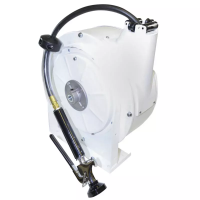GENERAL INFORMA TION
Determining Vehicle Payload
4. With the occupants in the truck for normal
hopper spreader operation, weigh vehicle to
obtain gross vehicle weight (GVW).
5. Subtract the GVW from the GVWR to
determine the available material payload.
6. Obtain the weight per cubic yard (1b./cu. yd.)
of the desired material from Table 2t page 4.
Use Table 3 to record infonnation.
I. Install hopper spreader and optional
equipment according to the instructions.
2. Install or attach any other equipment that will
be on the vehicle while the hopper spreader
will be in use (step bumper, trailer hitch,
snowplows, etc. ).
Fill gas tanks.
3. Obtain the Gross Vehicle Weight Rating
(GVWR), Front Gross Axle Weight Rating
(FGA WR), and Rear Gross Axle Weight
Rating (RGA WR) from the certification label
located inside the driver-side door jam.
Divide the weight into the payload to
detennine the maximum volume of material
that can be carried.
7. Compare the maximum volume to Figures I
or 2 on page 4 to determine the maximum
height of the material in the hopper spreader .
8. Fill hopper with the material to the height
calculated. Re-weigh vehicle with occupants
and verify the GVW , Front Gross Axle
Weight, and Rear Gross Axle Weight are less
than the vehicle's ratings.
9. Repeat steps 7 and 8 for each type of material.
Refer to Table 3 on page 6 for an example and
worksheet.
Fonn No.80357
5
April 2, 1998

